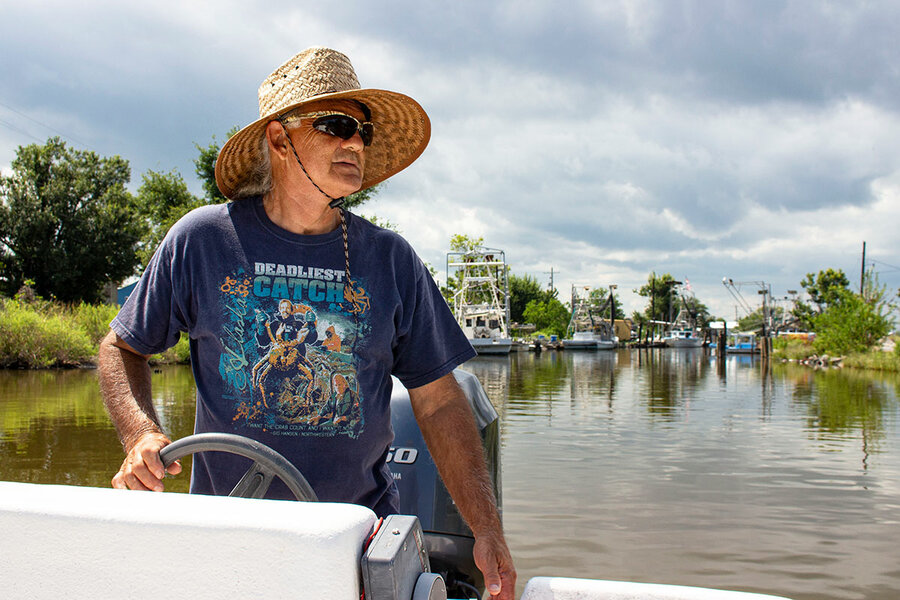Original publication by Karan Deep Singh and Bhadra Sharma for nytimes.com on 11 November 2022
An effort decades in the making is showing results in Nepal, a rare success story in a world of cascading climate disasters and despair.

Karan Deep Singh/The New York Times
KANKALI COMMUNITY FOREST, Nepal — The old man moved gingerly, hill after hill, cutting dry shrubs until he was surrounded by trees that had grown from seedlings he had planted two decades ago. He pointed to a row of low peaks above the Kathmandu valley that were covered with dense foliage.
“You see that? They were barren mounds of red mud 15 years ago,” said the man, Khadga Bahadur Karki, 70, tears of pride fogging up his glasses. “These trees are more than my children.”
This transformation is visible across Nepal, thanks to a radical policy adopted by the government more than 40 years ago. Large swaths of national forest land were handed to local communities, and millions of volunteers like Mr. Karki were recruited to protect and renew their local forests, an effort that has earned praise from environmentalists around the world. But the success has been accompanied by new challenges — among them addressing the increase in potentially dangerous confrontations between people and wildlife.
Community-managed forests now account for more than a third of Nepal’s forest cover, which has grown by about 22 percent since 1988, according to government data. Independent studies also confirm that greenery in Nepal has sprung back, with forests now covering 45 percent of the country’s land.
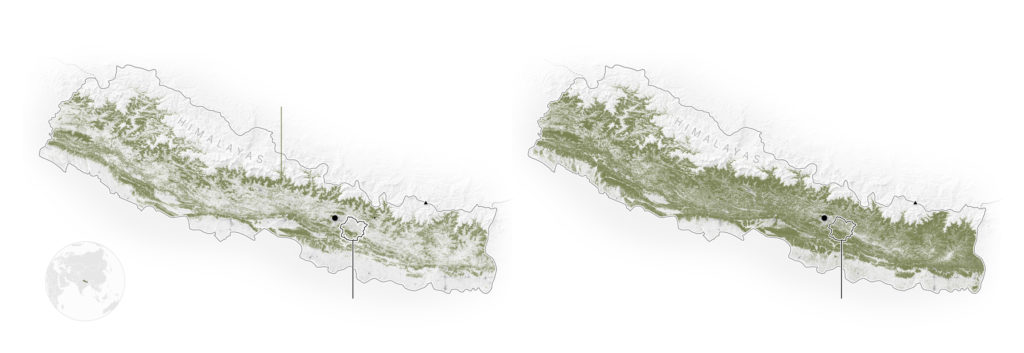
Source: Jefferson Fox, Jamon Van Den Hoek, Kaspar Hurni, Alexander Smith and Sumeet Saksena.
By Pablo Robles
“When the forests were common property, people abused them,” said Jefferson Fox, a senior fellow at the East-West Center in Honolulu and a principal investigator on a NASA-funded study that found Nepal’s tree cover had doubled between 1992 and 2016. “Now, you’ve got the community saying, ‘No, you don’t go there!’ So, the trees are coming back.”
Back in the early 1980s, the government couldn’t persuade people to stop cutting trees for farmland and for firewood. The deforestation made floods and landslides more frequent, alarming the country’s leaders.

Karan Deep Singh/The New York Times
What followed was an enormous replantation effort that was bolstered by foreign aid. Villagers like Mr. Karki planted seedlings of rosewood and sal on barren hills. Then they organized themselves in groups, each tasked with protecting the saplings in a designated spot and preventing locals from cutting grass for feed.
The challenge now is to sustain this fragile recovery. For the community foresters, that involves guarding their forests from the timber mafia, poachers and from nature itself.
A warming planet has made forest fires a palpable threat, so hundreds of local workers clear dry twigs, grass and the bark of dead trees, which are then used by residents as kindling, animal feed and building material. Any surplus is sold for additional revenue.

Karan Deep Singh/The New York Times
Many community forests are adjacent to national parks, and their revival has allowed endangered plant and animal species, including the tiger, the one-horned rhinoceros and the gharial, a crocodilian reptile, to thrive.
But the increase in wildlife has also been accompanied by a sharp increase in human-animal conflict as animals cross the boundaries of the poorly fenced parks. Members of Nepal’s marginalized groups who live around the heavily patrolled national parks say the government is trying to move them away from their lands so as to restrict their access to grass, fish and herbs.
One morning early this year, Chijamaya Sarki, 61, was cutting grass for cattle feed in a forest when she was attacked and killed by a tiger, her family said. “We only received her half-eaten body,” said Shyam Bahadur Majakoti, her son, still visibly in shock and dressed according to a traditional mourning ritual.

Karan Deep Singh/The New York Times
Mr. Majakoti, 35, who belongs to the oppressed Dalit community, said he had no option but to go back into the forest to look for grass like his mother. “This is how we survive.”
While the growth of the forests is primarily a result of community forestry, experts say, migration and decreasing dependence on agriculture have also contributed to it.
Hundreds of thousands of Nepali youth migrate each year to other countries in Asia or to the Persian Gulf in search of stable, well-paying jobs, leaving fewer workers at home. Foreign remittances now represent almost a quarter of the country’s economic output, and brought in about $7.35 billion in 2020.
“Once you have remittance money, you don’t worry about hard agricultural labor,” said Naya Sharma Paudel, a researcher who has been studying community forestry in Nepal.
The shift is pronounced in the village of Chainpur, where the Kankali Community Forest is at the center of the rural economy. Many people have moved on from subsistence farming, taking up alternatives like beekeeping and growing profitable crops like dragon fruit and strawberries.
Keshav Raj Basnet runs a thriving beekeeping business, earning $5,000 a year from 12 hives. His older brother, Vijaya Basnet, doubled his annual income after getting a job to help manage the forest. Half his earnings come from his feed farm, two buffaloes and one cow. Vijaya Basnet, 50, said his job is also helping him fund the education of his two sons abroad.
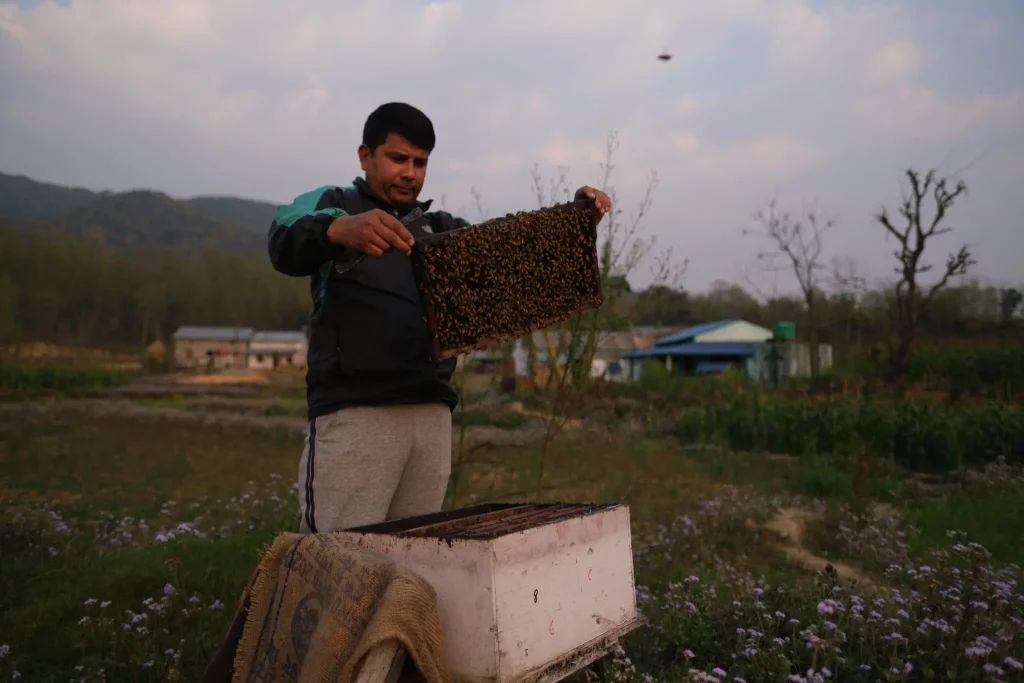
Karan Deep Singh/The New York Times
The forest is everything for us,” he said.
The forests also are crucial to the finances of the government of Nepal, one of the poorest countries in South Asia. It is set to receive billions of dollars for its work on forest conservation and climate protection in the years to come, Ramsahaya Prasad Yadav, who served as a forest minister until July, said in an interview.
Nepal is expecting a $7.4 billion package from a group led by the British government to “build back greener from Covid-19” and about $300 million from Norway, the United States and Britain, among others, for helping reduce global emissions.
The government has taken steps to ensure the safety of these valuable forests, even deploying troops in some national parks to guard them from poachers, and the authorities say, from the locals. But the heavy troop presence has also caused tensions with local communities.
In Chitwan National Park in southeastern Nepal, which is surrounded by community forests, more than 8,000 armed troops guard a wildlife reserve with tigers, rhinoceros, crocodiles and leopards. They patrol round the clock, on foot, bicycle, boat and elephant.
On a recent afternoon, Sgt. Anil Bahadur Gurung, who fought Maoist rebels during the country’s decade-long civil war around the turn of the century, took cautious steps through a dark canopy of sal trees, looking out for any signs of an approaching tiger.
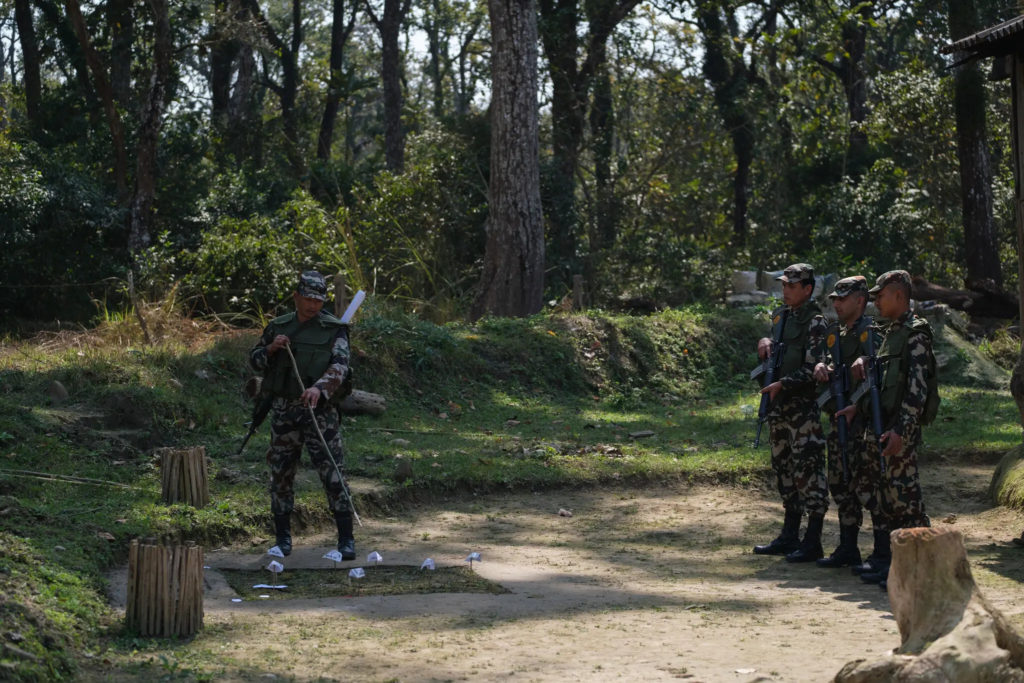
Karan Deep Singh/The New York Times
Sergeant Gurung, 36, who is armed with an M-16 rifle, said that on a recent patrol he was chased by a tiger. “I was so scared that I climbed a tree,” he said. “We are allowed to use our gun to protect ourselves, but I am here to protect the animals,” not shoot them.
More than 100 of Mr. Gurung’s peers have died on duty in wildlife attacks since 1974, the Army has said. The army has also had a fraught relationship with some locals, who accuse it of heavy-handedness against ethnic minorities.
In July 2020, troops found Raj Kumar Chepang, 24, fishing in the restricted area of the national park. His punishment, a beating from sticks, was so severe that he died a few days later, according to a police report. His family says he was targeted because of his ethnicity. A soldier has been convicted in his death.
“They took our heart away,” Aaiiti Maya Chepang, his mother, said in a fit of rage.
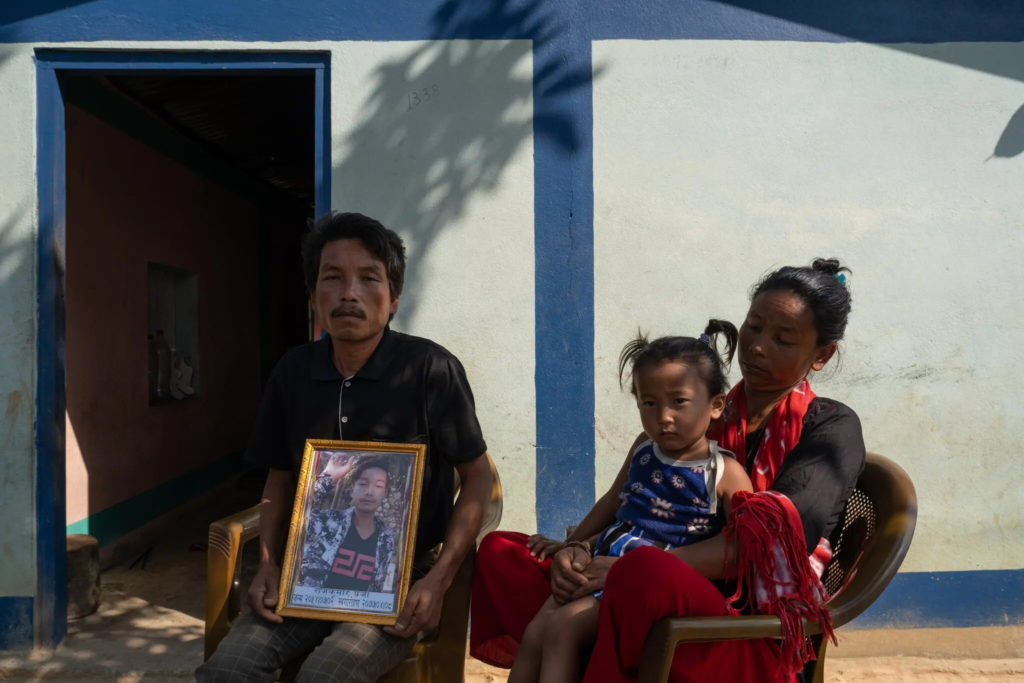
Karan Deep Singh/The New York Times
The Nepal Army did not respond to requests for comment on Mr. Chepang’s case, but an officer said that the Army’s presence is crucial for the animals and their habitats.
“There can be no rhinos without the Army,” Lt. Col. Deepak Koirala, who is deployed in Chitwan, said in an interview.
A few miles away from Chitwan, the once-barren 750 hectares of the Kankali Community Forest are home to tigers, deer and pangolins. Rainfall, once intermittent and inadequate, is normal.
These were just some of the dividends, said Mr. Karki, the community forester, of the decades of work put in by him and his compatriots. He started planting seedlings at Kankali in the early 1990s.
“The trees, the animals, they are all our friends,” he said. “We can’t live without them.”


